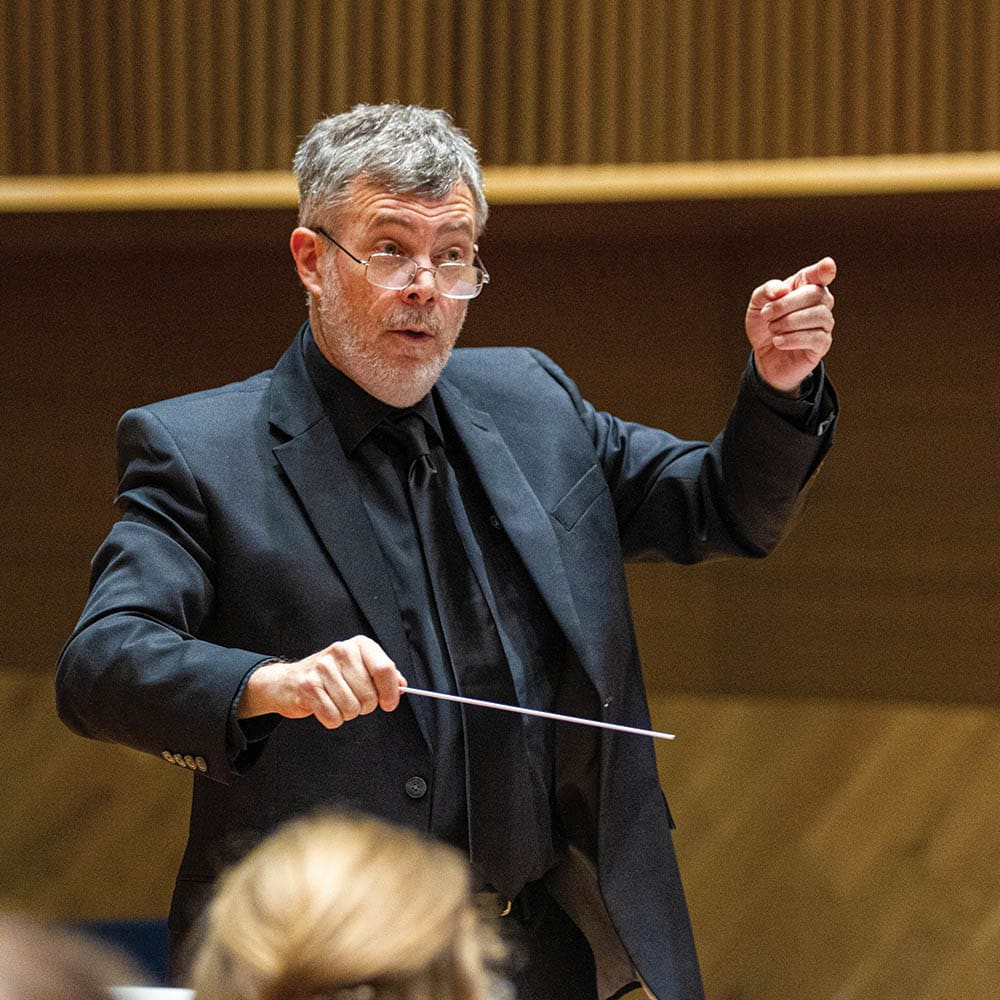Concert Programming for Optimum Impact on Players & Audience
By Dr. Rob McWillams
Concert Programming for Optimum Impact on Players & Audience

By Dr. Rob McWillams
In my previous Off to a Great Start (2020) article ”Choosing Repertoire and the Three “E’s”: Expression, Education, Entertainment” I shared some suggestions for selection criteria that relate to choosing individual pieces for a school ensemble. Assuming you keep in mind those suggestions, including appropriate level of difficulty, etc., the current article deals with the next step of choosing a program of pieces that work well together to create a rewarding experience for both performers and audience.
I like to think of a concert as a kind of “show” that has an overall dramatic “arc” - not dissimilar to what an effective individual composition might also have. In other words, a good concert is a kind of musical “journey” that takes the listener through a variety of listening experiences with associated emotional peaks and valleys in some kind of satisfying and logical progression.
At the risk of stating the obvious, one of the first things to consider is the length of the concert you are designing as that will determine the overall “shape” of your program in terms of number of pieces, etc. It can be helpful to think in terms of some typical categories of pieces and how they might fit together as “section types” of your program. For example: Fanfare, Opener/Closer, Slow/Lyrical, Suite/Multi-Movement, Major Work, Overture, March, (arrangements of) Popular/Commercial with a more “fun” element, Solo Feature, etc. While there are many possibilities, one program using some of these categories might be put in order along the lines of: (1) Fanfare; (2) Overture; (3) Slow/Lyrical; (4) Major Work; (5) Solo Feature; (6) Closer (or March).
Some other ideas for “designing” a set of pieces that will make a satisfying program overall could include: (1) Thematic (e.g., “Tributes” or “Songs & Dances,” etc.); (2) Chronological from oldest to newest; (3) Pieces that Increase in harmonic, rhythmic, and/or dynamic complexity; (4) Composer focus on: diversity (e.g. gender, ethnicity, age), nationality or geographic region, etc.; It can be difficult to follow a very specific design concept for every piece on a concert, but a concept can still be effective as an organizing principle if it is central to most of your repertoire choices for that particular program.
Another primary consideration is variety across the whole program. This applies to keys (I’m fairly confident nobody really wants to hear a string ensemble perform a concert in D major or a wind band performance all in Bb major!). As well as keys, it is important to think about variety in terms of meter, tempo, style period, energy level, scoring thickness/texture/transparency, etc. I find that making a playlist of my intended program order in playback software (e.g., iTunes) and then test listening to the end of each piece into the beginning of the next allows me to get a better feel for how those transitions will flow.
Additionally, I often consider in program planning starting with what might be considered a “core” piece for the whole program (or for each half of a program if there are two halves). This might typically be a major work, something that carries the strongest emotional message. I then consider what other pieces could be placed around that one item to provide an appropriate preparation into that work and resolution following. An example of this approach for wind band is a kind of “triptych” grouping I have used: (1) Prelude in Ebm (Shostakovich arr. Reynolds); (2) Symphony #1 - In Memoriam Dresden (Bukvich); (3) Salvation is Created (Tschesnokoff arr. Houseknecht). In this grouping, the Shostakovich sets a powerfully dark mood of impending doom. The Bukvich explores a whole range of emotions and narratives connected to the Allied forces fire-bombing of Dresden in WWII. The last movement uses graphic notation and many unconventional and tension-filled sounds in an attempt to represent the horrific firestorm that resulted from the bombing. This movement finishes with emulated dying “sobs” from a solo flute. The Tschesnokoff then follows as a kind of hopeful and very consonant resolution from the tension and drama of the music that preceded it. The result of this grouping creates a dramatic “arc” with building of tension through drama and dissonance finishing with resolution.
In addition to the above considerations of length, variety, design, a “core” piece to build a program around, it is also helpful to contemplate the emotional/intensity “map” of the overall program. Does your set of pieces reach a kind of “peak” in terms of intensity at a logical place in the overall performance time frame? In single compositions, this moment typically occurs around two-thirds to three-quarters of the way through. Applying this idea to a set of pieces can also be effective.

Dr. McWilliams’ career includes 23 years working in the United States as a musician and educator, encompassing a broad range of styles from symphonic to jazz. His most recent appointment was Director of Bands & Instrumental Music Education and Head of Department at the University of Wisconsin, Oshkosh. While in the USA, he completed Masters and Doctorate degrees in Instrumental Music Education and Conducting. His charter with Yamaha Music Australia is to be at the front line, in schools and the community, helping ensemble directors and students reach their full potential.
